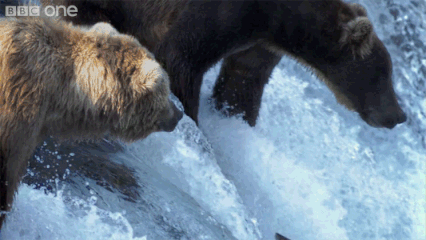Text
The Busy Days
The birds were busy. Oh yes, they were very busy. They had to be ready, and they always worked to be ready, to have all the pieces in place. To be ready for the eggs to arrive, for the eggs to hatch into their tiny, helpless chicks, to feed the hungry chicks all the earth, all the forest would provide them.
It began with the nests. The birds flew and hopped through underbrush, busily gathering their materials. They clenched twigs, moss, grass, all they found with promise to fortify and help the nests, and carried them back to the sites. One by one, they wove the twigs into place, lining the walls with mosses.
The eggs were laid, they hatched in time in their soft beds, hidden in the trees and blending into the leaves with the moss.
The birds now worked harder, endlessly. They left the nest early, as the sun’s first light brightened the treetops. They left the nest, heading for their usual spots. Some, near the forest’s borders flew to the humans’ yards nearby, searching through their bright green lawns for the plentiful worms and bugs within; the yards like a buffet. Yet they came with danger: many lurked under the shadows of the ever-watching cats that perched on the fences, their eyes following the birds’ every moves, waiting for the birds to become too focused, too distracted by the insects, before they pounced. Each morning, the birds hoped none would be caught, and they tried to remain aware and ready to fly in case the cat chose to pounce, and if a bird must be caught, they hoped it would not be them.
Other birds avoided the humans’ yards and their dangerous beasts. They chose to remain in the forests. It was no less full of predators, but this was the birds’ land. They knew its plants, logs, trees, bushes. They knew how predators sounded as they prowled and approached, and how friends sounded. Which sounds to fear, and which would simply act as another pair of eyes and ears to remain on the lookout for danger.
The forest birds hopped beneath bushes, they foraged in the old rotting logs, they wandered along the edge of creeks and all the places where bugs were plentiful and fat and prime for the taking. True, there were more places for the bugs to hide and escape, but this was what the birds knew how to do, what they were made to do. The birds knew how to listen to where the bugs were, where they were going. They could hop noisily nearby to shepherd the bugs towards the open areas where they could not hide. They could twist their necks and manoeuvre their beaks into the smallest holes and cracks to get the bugs.
The birds flew home to their nests. Greeted by the chirping of their young, they brought the young beaks of worms, beetles, flying insects. They worked to exhaustion to fill the young birds’ stomachs, to give them energy and strength and sustenance.
0 notes
Text

Dinner!
(On my travels)
Bushwalking at Rifle Creek
36 notes
·
View notes
Text
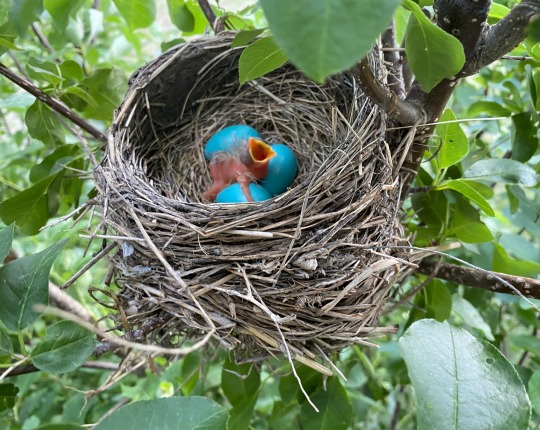

A robin made a nest & laid her eggs in the shrub just outside our bedroom window.
We’ve been keeping our distance but with the strong winds we’ve been having, decided to check and make sure the eggs stayed put.
Wouldn’t you know it … one hatched!!! ❤️
20 notes
·
View notes
Text
Babies getting bigger! They're 3 day old American robins. I would normally never get this close to a nest but the nest is literally under the floorboards of a structure that sees roughly 2,500 visitors per week, so it's a unique opportunity to observe these birds develop!
Video description: a 30 second video of an overhead view of four baby American robins in a grass and mud nest. They are pinkish gray with tufts of down feathers and a hint of adult feather formation. They open their orange mouths and beg for food from above. They jostle about and alternate between begging and flopping over, until all four babies are in a pile. End video.
20 notes
·
View notes
Link
0 notes
Text
The Bears
It was spring. The forest’s leaves were open, the flowers waxing and waning in waves as each new crop peaked. The lush green filled the tall hills, the snowmelt from winter ran through the valleys in the forest floor in mighty torrents.
The mother bear led the cub along the forest’s paths, unseen by humans, known only by the bears. The mother bear took care to show her cub the important paths: the trails to the best berry patches for each berry, and when to travel each path to find the berries at their ripest, their most plentiful. She showed her cub not to go too early, when the fruits were tough and inedible, or old and rotting and few and far between, so the cub would now how to get the best food.
The mother bear taught the cub where was safe, where was dangerous. She showed how she was nervous when they had to cross the broad human trails ripped through the forest, how to check for their scent to know if they were near, how to listen for their approach, how to approach the trail silently and unseen to make sure no humans were hidden nearby while they approached. She showed the cub how a bear must be weary of the humans. Prepare the cub before the fall, when the cub would see for itself how the humans could take down large animals, how it too could be a predator. The deer the humans would catch were larger than the cub, and the mother bear didn’t know if the humans might try to go after the cub if the humans thought it to be the easiest prey around.
As spring became summer, and summer ebbed into fall, the mother bear showed the cub the most incredible gift the forest gave the bears each year. The mother bear and the cub spent months eating berries and all the food their forest offered to them near their den, but it was time to leave, before they would be late.
The trek was long and tiresome, and the cubs legs were sore as the cub struggled to keep up with the mother bear and not slow them for rests. Already, the cub was learning the urgency of the call of food.
The cub was traveling to the River for the first time, but the cub could smell the River’s food before the cub could see its strong waters and its many rocky tumbling flows. Before the cub’s eyes, the fish leaped from the waters and flew. Bears, more bears than the cub had ever seen, stood in the river and on its rocks. The bears waited for the fish to leap, and they clamped muscled jaws around the salmon effortlessly, with the practice of many years of reaping the River’s wealth.
The cub watched as the mother bear selected an empty spot among the other large mother bears, their cubs too watching nearby, and the cub watched the mother bear focus on the river, watching the salmon as they flew up the shelves of rocks towards here waiting jaws. And the cub learned all it watched.
0 notes
Photo
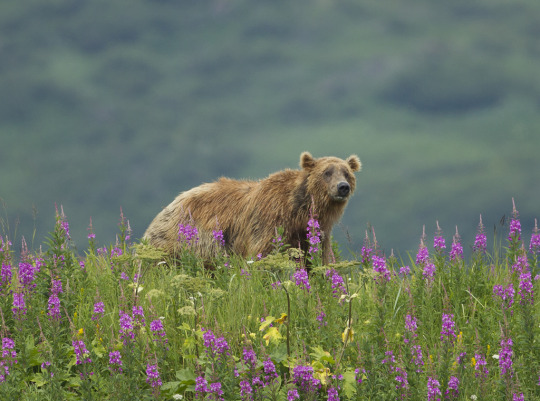
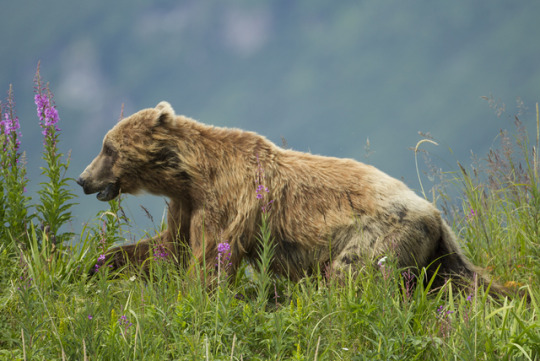
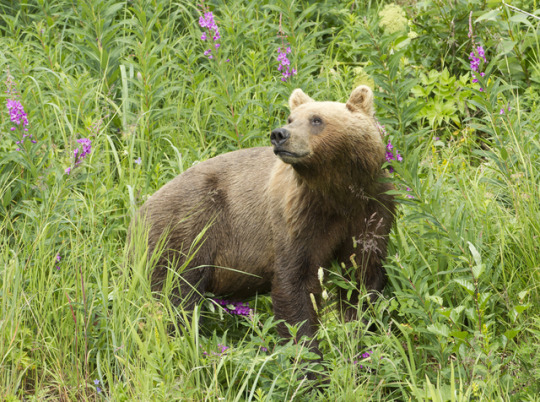
Brown bear in fireweed in Katmai, Alaska.
(by Richard McManus)
1K notes
·
View notes
Link
0 notes
Text
The Fire
It was night when the forest burned. The forest knew it had been too long since she last burned; she was filled with old wood and plants, all accumulated fuel. When the wind whispered to her that summer evening of the lightning at her borders, she knew it was finally here.
The lightning strike happened at sunset. The tree it struck exploded in flame, its dry leaves falling aflame onto the dry underbrush below. Hunks of wood shot like flaming shrapnel, striking trees, bushes, moss, and the piles of dry deadwood and leaves on the forest floor.
Flames engulfed the trees and all in its path. It raged across the forest, burning hot and bright through her vegetation and destroying the homes of her animals. Though she knew the fire must come and it was time for her to begin anew, she wept as her mighty trees fell one by one, as her animals ran for their lives, as some of the animals never made it and were encircled by the ravenous inferno.
When the flames subsided and traveled beyond her borders, she felt barren. All was black with burn or grey with ash. Naught stood tall save the mighty mother trees too thick for the flames to burn to their core and fall them. But even the tallest and heartiest of these trees were burned and blackened.
Yet, as the summer waned, as winter ebbed into spring, it began again.
The ferns were some of the first to return. The underbrush filled through the spring, nourished and thriving in the nutrient rich ashy soil from the burn. Salal grew taller than men, salmonberries alongside them, even taller. Vines and brambles snaked the forest floor, and moss sprouted from the spring rains.
Then, the first wandered back. The rabbits and mice found this thriving underbrush, thick and sheltered for their protection, filled with untouched food, still without competition and predators. They gorged and multiplied in this overflowing utopia until the predators noticed and the larger prey trickled back.
Deer arrived and gave birth in this safe haven where their young could grow strong on the lush vegetation. Coyotes and birds of prey arrived, drawn by the irresistible numbers of rabbits. Cougars arrived soon after the birthing of the deer. Bears returned at the height of the berry season to the fields of undergrowth drooping under the weight of their fruit.
Saplings dug their way out of the earth. They grew swiftly, racing upwards towards the sunlight. Their roots stretched far into the soil. They soaked in all the ash offered and grew taller, crowned in bright green new growth. Their roots found those of the mother trees that survived the fire and they bound together through links of fungi, giving the fungi sugars while their gave the trees nutrients and water, and linked the trees so that the mother trees could share their own nutrients with the young saplings so they too would become tall and strong.
Yes, the fire hurt her, but the forest never died, and grew anew, stronger from the flames.
0 notes
Photo

Horse Creek Complex (2017) 2 years on, Willamette National Forest, Oregon USA
17 notes
·
View notes
Link
0 notes
Link
1 note
·
View note
